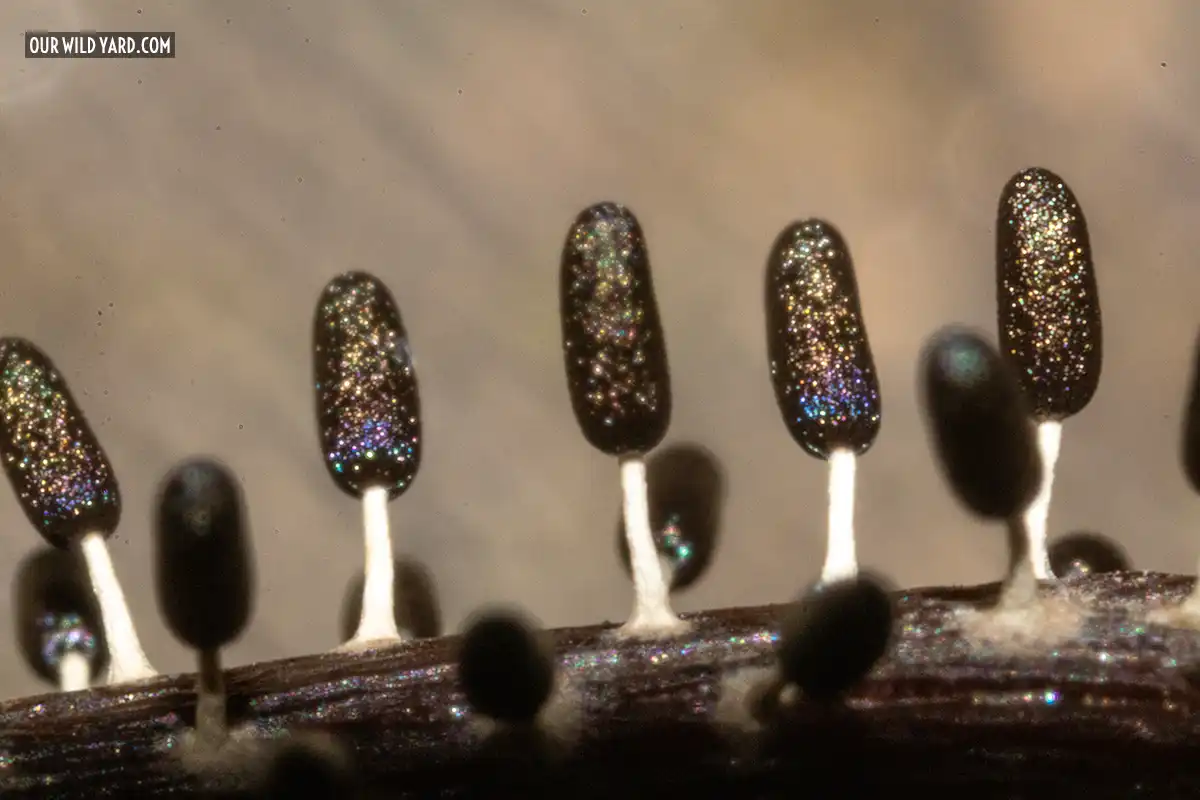Our yard is pretty wild, and we leave everything on the ground to rot. Doing this creates the perfect habitat for small invertebrates and slime molds to thrive like this chocolate tube slime mold. Decaying leaves, dead and moist logs, and compost heaps are great habitats for slime molds to grow. Just like the white-footed slime mold (Diachea leucopodia) that I once found in a pile of leaves.
I’ve always seen slime mold in their plasmodial amoeboid stage like Fuligo septica (dog vomit slime). I discovered something unusual growing on leaves I immediately thought they were fungi and not slime mold. Also because they looked like tiny mushrooms.
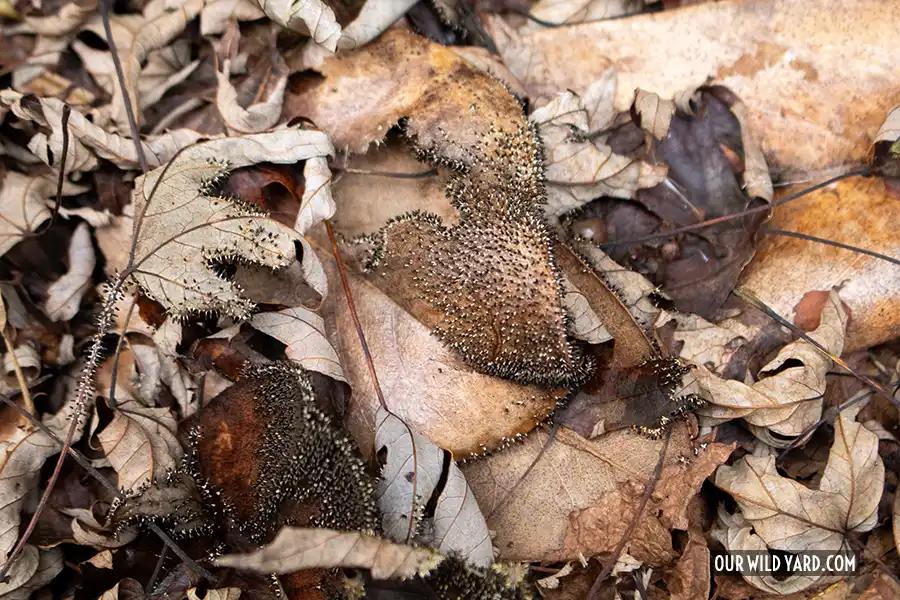
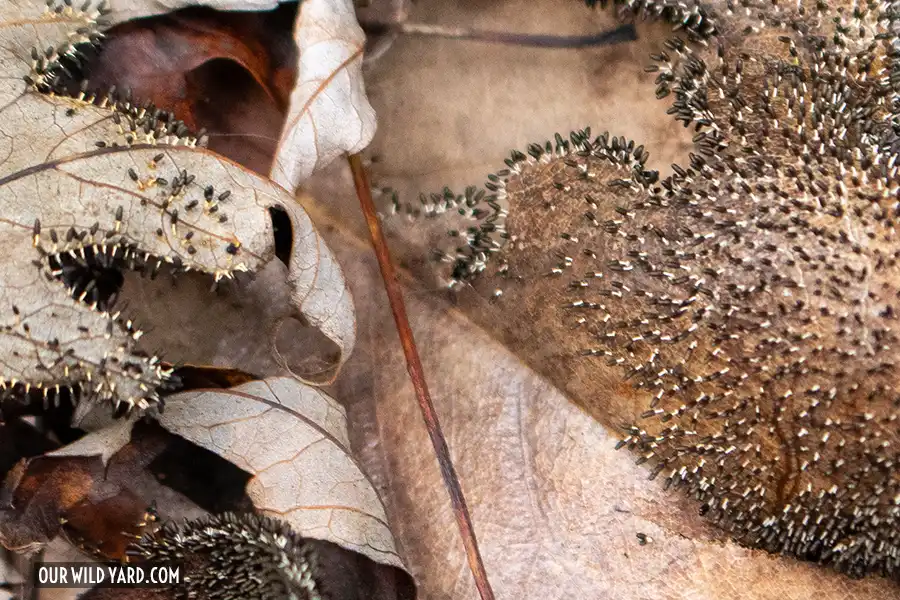
But these tiny fungi-looking things are not mushrooms. These are, in fact, a colony of white-footed slime mold in their spore-producing stage.
*This article may contain affiliate links. We receive a small commission at no extra cost to you.*
If you are looking to learn more about slime molds, check out this book on slime mold ecology: Myxomicetes: Biology, Systematics, Biogeography, and Ecology by Carlos Rojas, and Stephen L. Stephenson.
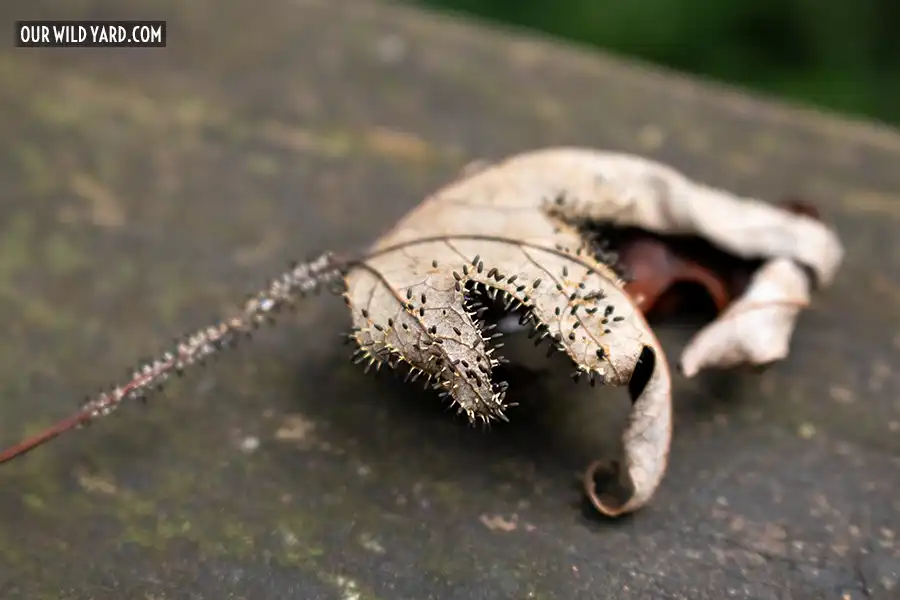
I was so surprised by these tiny mushroom-like creatures that I decided it was time to get the macro lens out (I used this LAOWA macro lens). And here it was, the white-footed slime mold in all its glory, with its brilliantly iridescent cylindrical sporotheca.
At first, I misidentified it as the cotton candy (or carnival candy) slime mold, but the more I looked at it the more I thought I wasn’t correct. We don’t have a slime mold field guide (and I can’t find one so if you are an expert, please make one, I’d buy it!) so it took a bit of research to finally find the correct ID.
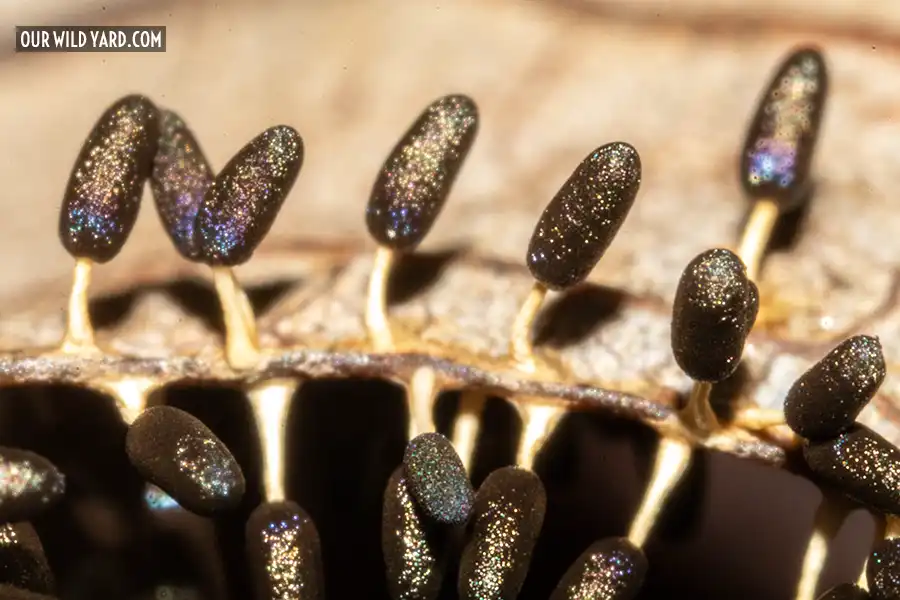
This iridescence is the reason why this slime mold is often called, white-footed blue iridescent slime mold.
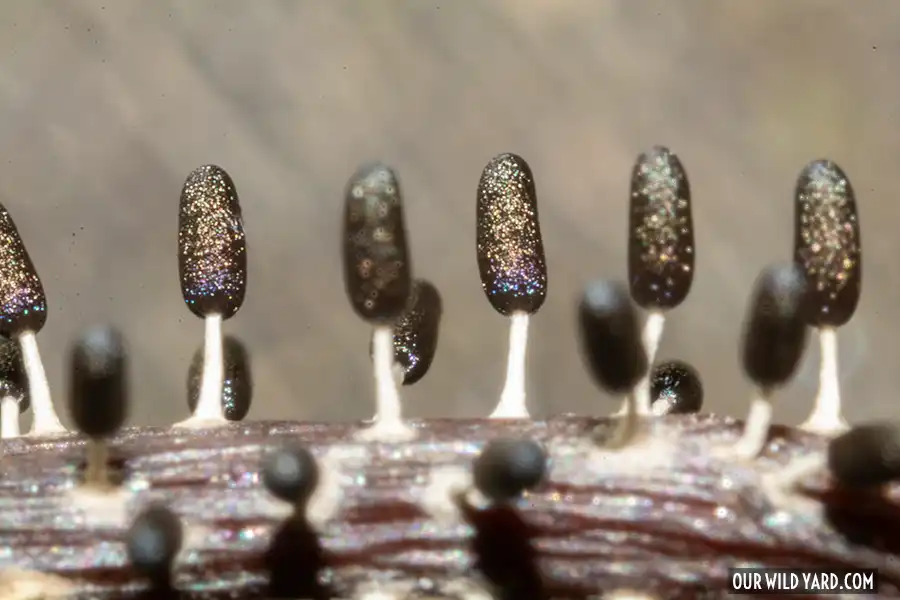
This is what I’ve learned about the white-footed slime mold. It starts as a glossy white plasmodial mass feeding upon bacteria and substrates such as decayed logs and leaves.
Eventually, this plasmodial amoeboid stage gives way to the spore-producing stage. It is then when 1/8 inch cylindrical white sporophores (the spore-bearing structure of a fungus) emerge, turning salmon pink and finally into a brilliantly iridescent cylindrical sporotheca (spore containing part of the sporocarp) with a thick white stipe( little ‘trunk’). So I basically found this slime mold in its last stage, just before the spores are released.
The hypothallus (the layer on which the fruit body sits, lying in contact with the substrate) is heavily calcified with lime. You can see this in the photo below as the hypothallus is in contact with a maple leaf.
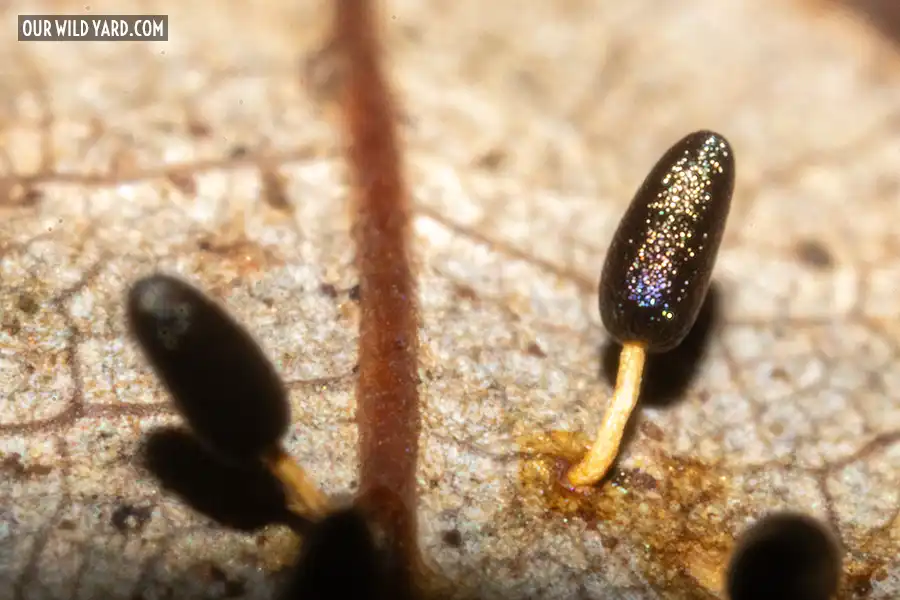
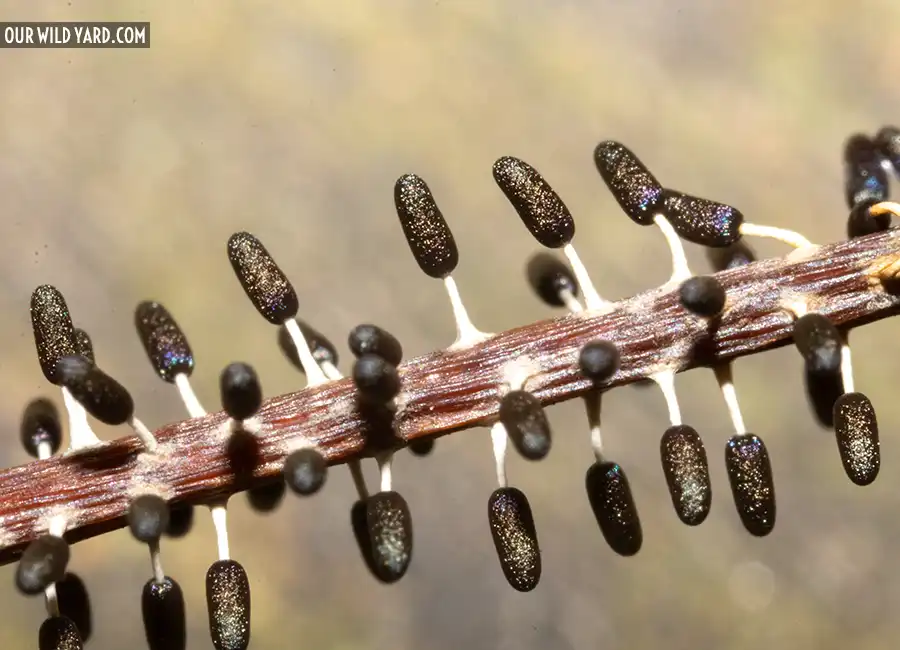
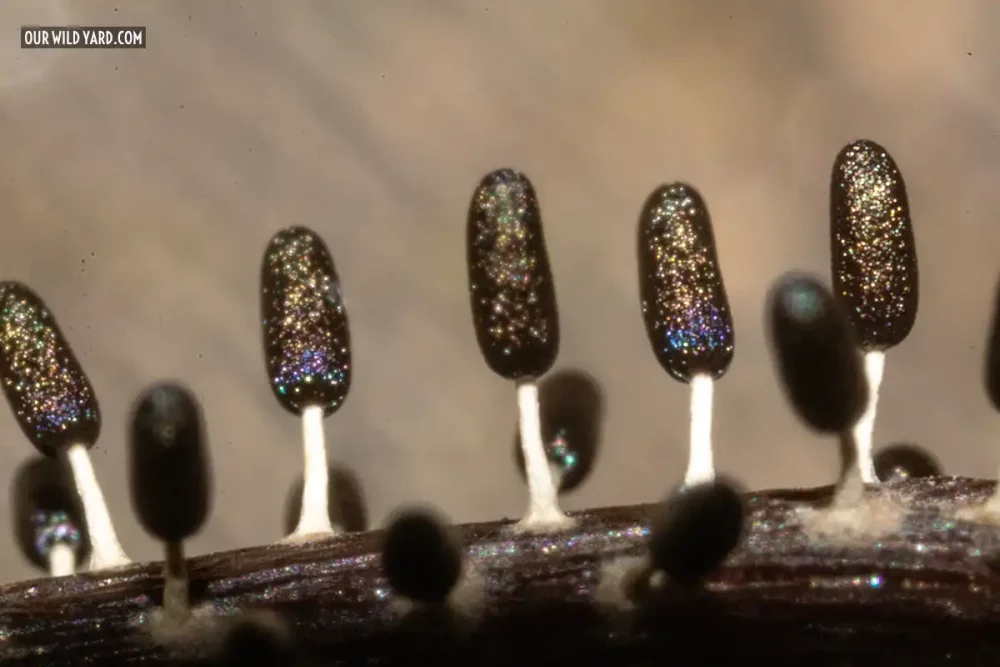
I was pretty excited to have found this slime mold in our yard. And a little bit sad that I could not see how the other stages of this slime mold looked since this was the last one.
I will be keeping an eye on our dry leaves this fall closer for the first signs of slime mold activity. This must be one of the fun reasons to not get rid of the leaves in your yard. You will be missing out on all these exciting happenings!

